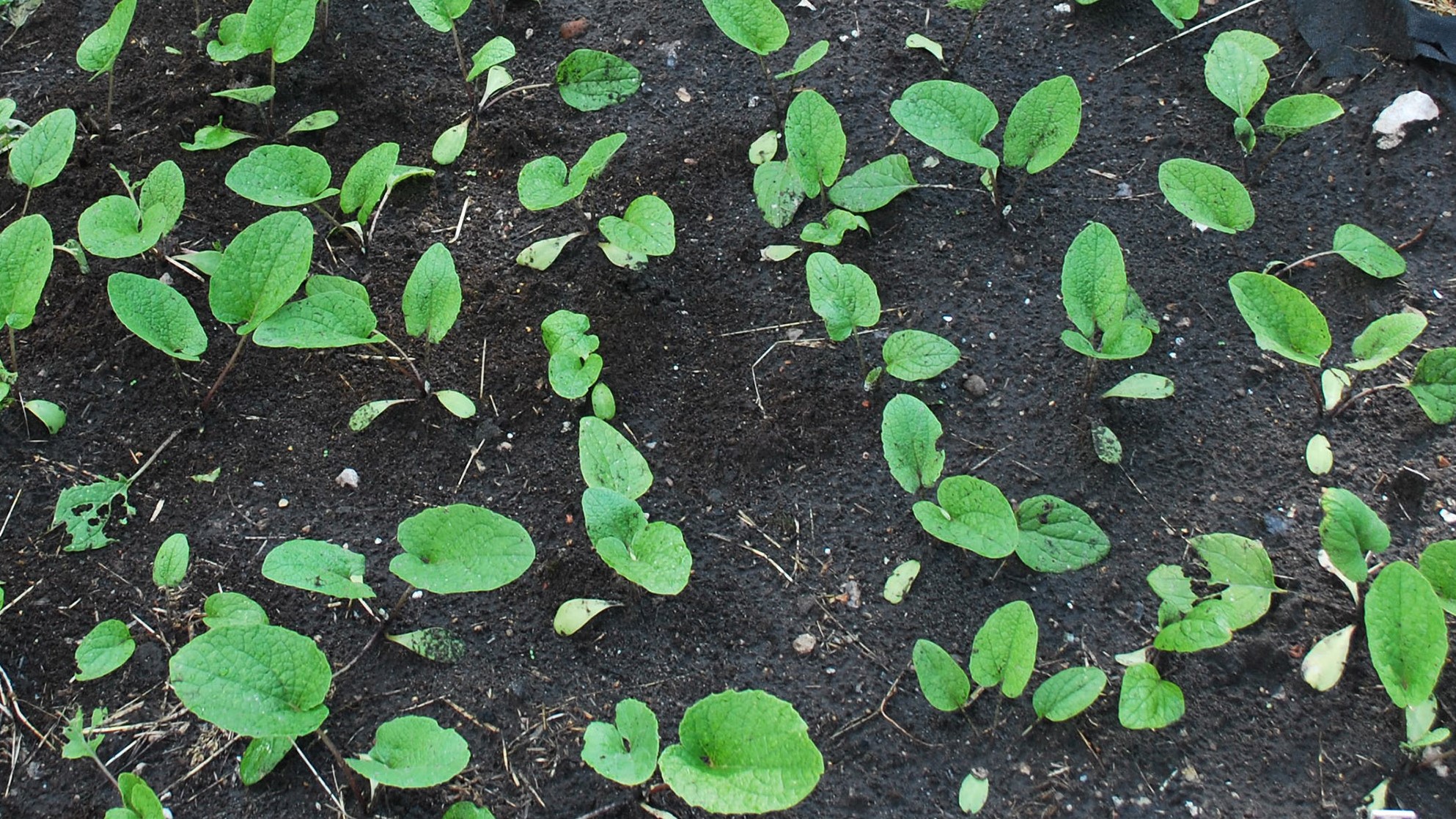
Arctium minus (lesser burdock)
Lesser burdock is a biennial that grows up to 100-150 cm with similar characteristics like the greater burdock. It is native to Europe and considered invasive in Australia, North- and South America. It has been used in Western and Asian herbal medicine for detoxifying traits, even if greater burdock is more commonly used. The roots of Arctium minus can be used raw or cocked as a vegetable, but other parts are edible as well. Lesser burdock is antibacterial and antifungal and, the plant is considered good for treating different types of skin diseases, burns and bruises. The fibers from the plant have historically been used for making paper. It is in bloom between July to September.
Cultivation
Sow the seeds in April in a broadcast tray in tray substrate under light conditions, approximately 20-23 °C. Cover seeds to a depth of 1-2 cm. When large enough to handle transplant the plants into small individual pots in pot substrate. The pots can be placed in an unheated greenhouse, or outside when the risk of frost has passed. When fully rooted in the pots, plant outside in field in a semi-shade or sunny position. The plant can be grown in most soils.
Family: Asteraceae
Swedish: liten kardborre
Finnish: pikkutakiainen
Norwegian: småborre
Danish: liden burre
Icelandic: dverglappa

Sow the seeds in April in a broadcast tray in tray substrate under light conditions, approximately 20-23 °C.
If cultivating in order to harvest the roots, it’s a good idea to get the young plants in the ground before the taproots develop. To gain long and straight roots, grow the burdock about 15 cm apart or in rows 30 cm apart with the plants five to eight cm apart in the rows. The seeds ripen from September to October. The seeds are mature when both the seeds pods and the stems below are brownish and dry. Always harvest in dry conditions. Use a pair of scissors to cut just below the seed pod. As with the greater burdock, it is important to be careful when harvesting the seeds since tiny hairs from the seeds can cause an allergic reaction when inhaled.
